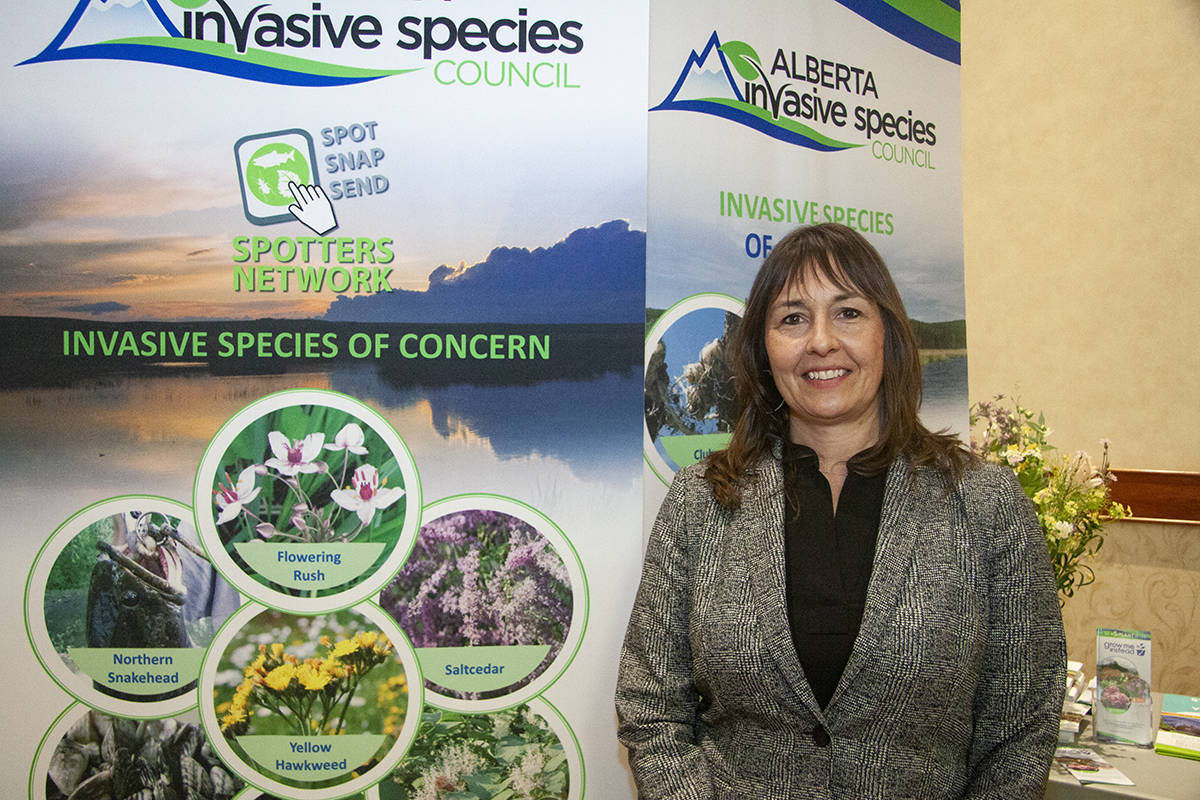The Lacombe Memorial Centre recently hosted the sixth annual Alberta Invasive Species Council Conference, which brings together specialists int he fields of biology, weed inspectors and agriculture to help combat invasive species from getting into Albertan ecosystems.
Delinda Ryerson, executive director of the Alberta Invasive Species Council, said there are many invasive species already in the province and in most case, once they arrive — they are here to stay.
“They aren’t invasive species unless they fit certain criteria: One is that they are not native to Alberta and two, that they cause serious detrimental damage to either our environment, our economy or our human health,” Ryerson said.
One invasive species the Council is currently working hard to keep outside Albertan borders using educational campaigns is aquatic invasive mussels. If they were to arrive, it would be a drastic drain on the economy.
“If they arrived in Alberta, it would be absolutely devastating. These things thrive in irrigation canals and it would be billions of dollars to fix,” Ryerson said.
Ryerson said their are large animal invasive species like wild boars in the province, but the majority of species they deal with are often agricultural weeds that also negatively affects the economy.
“They cause tremendous damage to farmlands and once they take off, they have invasive characteristics. They can produce rapidly and often can reproduce by more than one means,” she said.
One of these rapidly reproducing plant species in Flowering Rush, which is a European aquarium plant that has infested the river systems of the Bow and South Saskatchewan’s rivers, as well as Lake Isle near Edmonton. The plant is often sought after by aquarium owners because of their pretty pink colour and alluring smell.
“It is getting worse all the time and this stuff chokes out everything else. It is associated with swimmers itch and you can end up instead of having a slough, pond or a lake even — you can end up having a flowering rush meadow,” she said.
Closer to home, Prussian Carp — a relative of the common goldfish — has infested many bodies of water from Lacombe all the way to the U.S. border. Ryerson said the Council suspects this infestation may have started with someone releasing their pet into into the wild.
“These things wreak havoc,” she said. “They eat everything in sight and they are very tolerant of low oxygen levels. They muddy the water up which results in warmer water with less oxygen.
“They can even actually go through a process called gynogenesis. They can basically reproduce themselves using the sperm of a different fish species.”
Ryerson said the majority of invasive species are caused, unfortunately by humans who are unaware of the consequences.
“Someone releasing their fish is not someone intentionally wanting to destroy the environment, they just don’t understand the ecological implications,” she said.
The Council focuses on educational campaigns but the Provinces does have punitive legislation in case problems persist.
“There is the Alberta Weed Control Act, which has a couple list of species,” she said. “One is the prohibited noxious list and the other is noxious list. If weed inspectors see you have a prohibited noxious plant growing on your property, you could get a weed notice and you have to get rid of it.
“In the Fisheries Act, there is a whole list of invasive species that include fish and invertebrates. If you have any of those, it is illegal and it is illegal to release fish or other things that don’t belong in the environment.”
The Council and the Province are looking into research on how to remove invasive species from an ecosystem without destroying the entire system, but generally the only way to protect the environment is to prevent first contact.
“We are trying to do educational things through activities, for example I am trying to educate about Prussian Carp by having a Prussian Carp Fishing Derby with families getting outside and having fun but once something like that gets in the system, it is like cream in your coffee — you can’t remove it,” she said.
Ryerson said the best thing citizens can do is to ensure they know what they are putting into the environment.
“Don’t let out your aquarium vegetation or other species because it compounds the issue and destroys ecosystems irreversibly,” she said.
todd.vaughan@lacombeexpress.com
Like us on Facebook and follow us on Twitter



